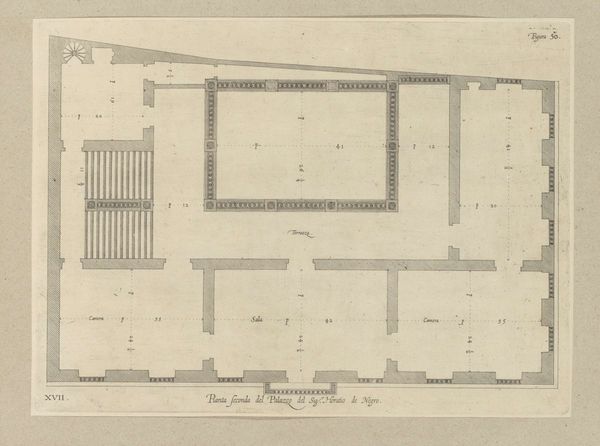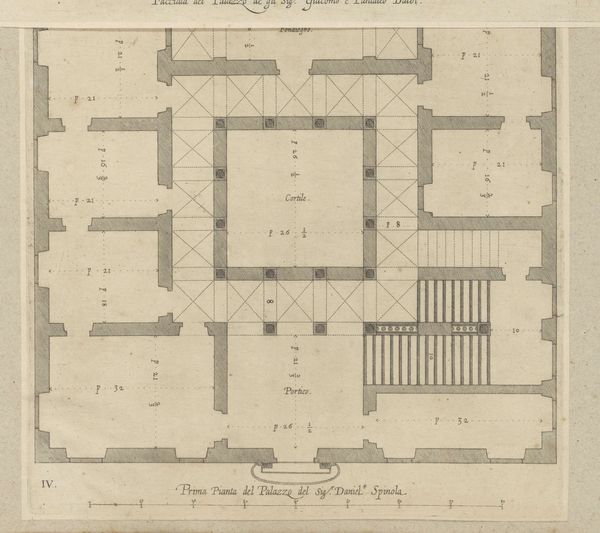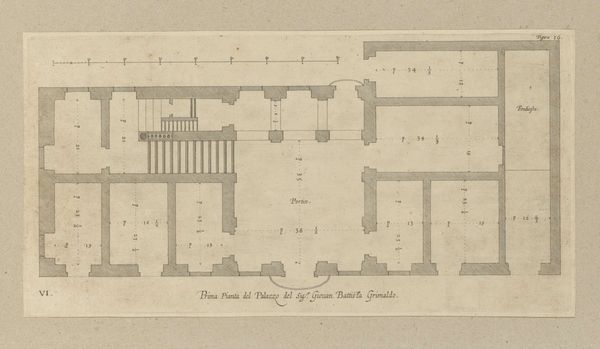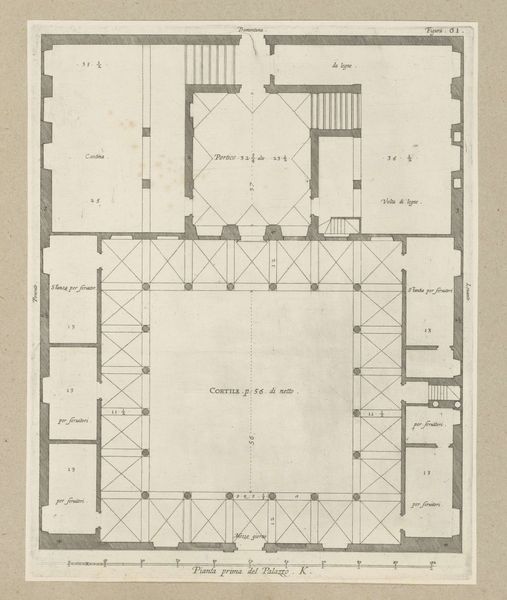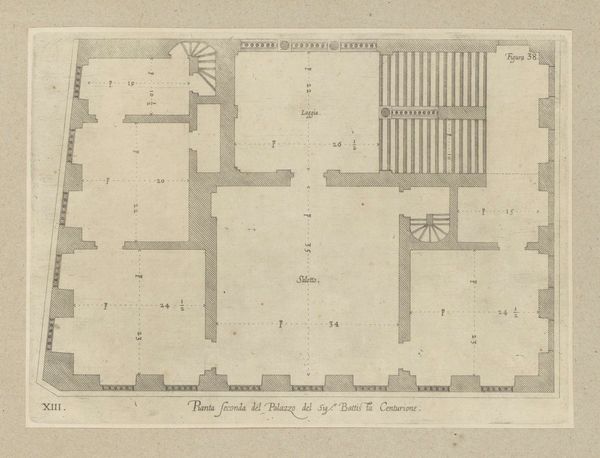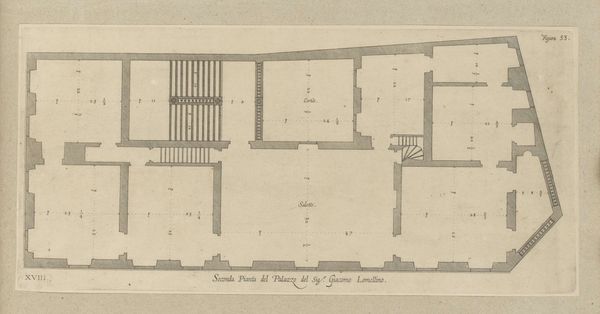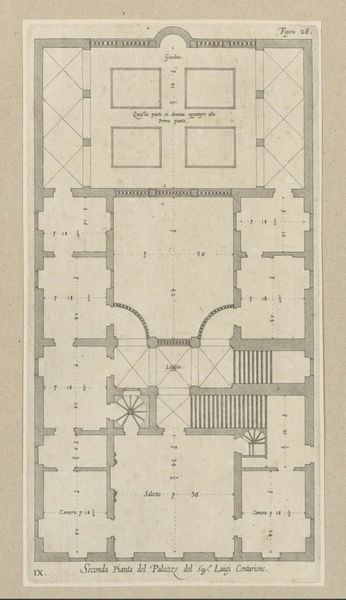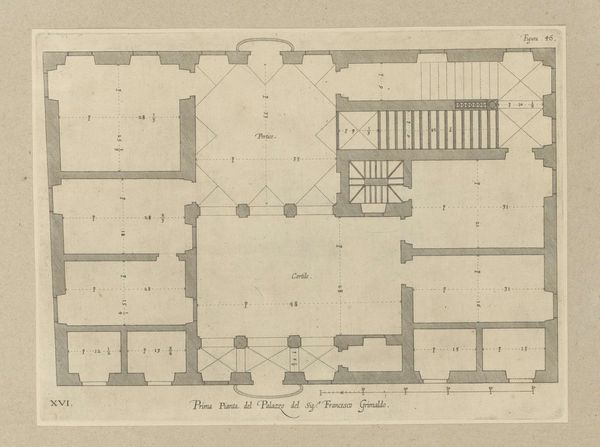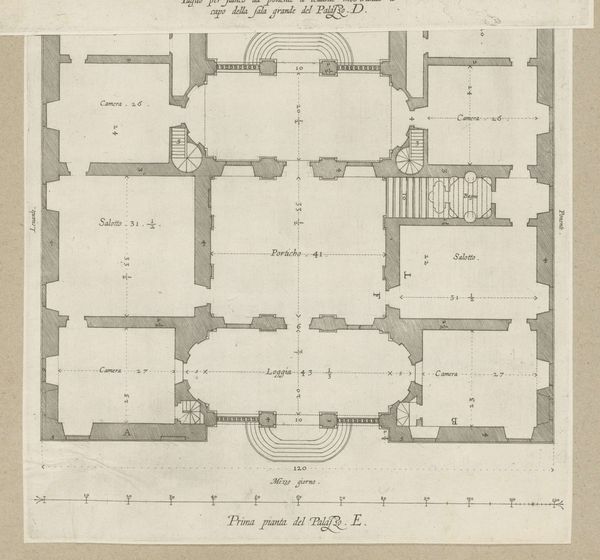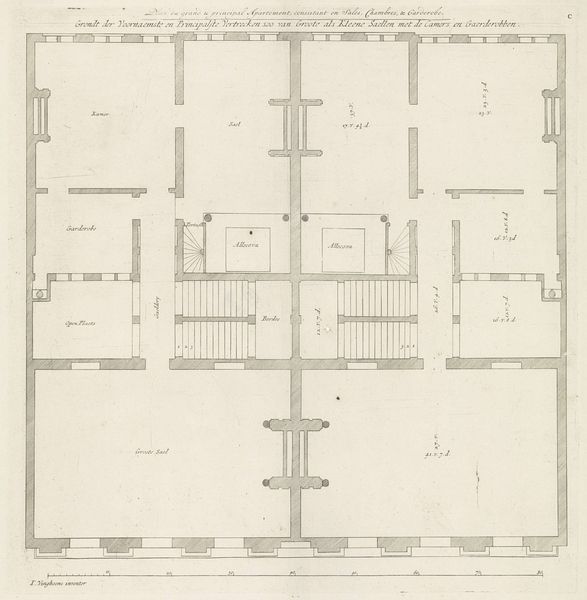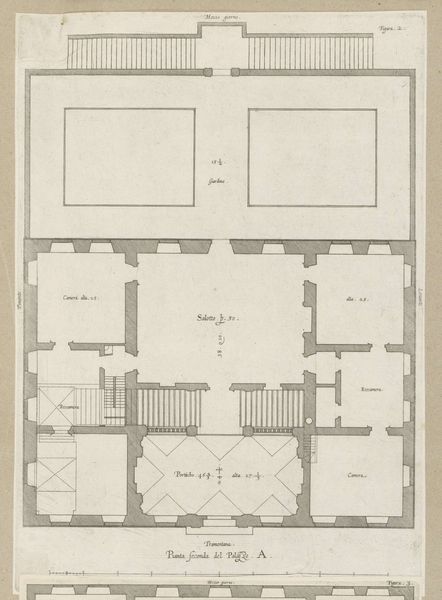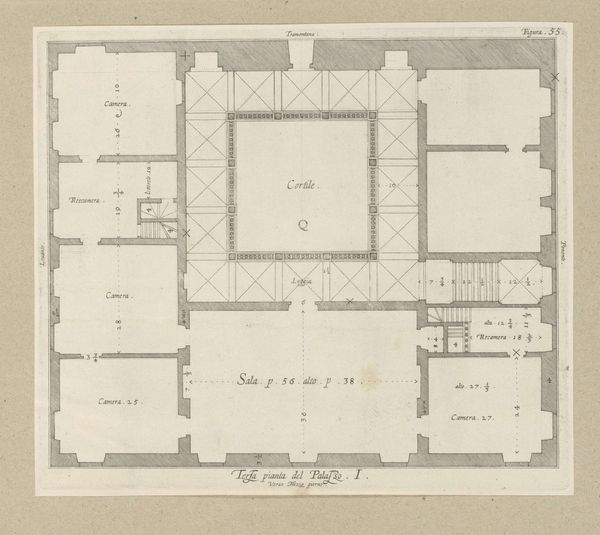
Plattegrond van de begane grond van het Palazzo Ambrogio Di Negro te Genua 1622
0:00
0:00
nicolaesryckmans
Rijksmuseum
drawing, paper, architecture
#
beige
#
drawing
#
neutral colours
#
aged paper
#
homemade paper
#
baroque
#
parchment
#
light coloured
#
paper texture
#
paper
#
geometric
#
folded paper
#
paper medium
#
architecture
#
1960 printing style
Dimensions: height 248 mm, width 335 mm, height 583 mm, width 435 mm
Copyright: Rijks Museum: Open Domain
Curator: Let’s consider this drawing, “Plattegrond van de begane grond van het Palazzo Ambrogio Di Negro te Genua,” a ground plan of a palace made by Nicolaes Ryckmans in 1622. Editor: It's fascinating to see architecture presented as art. The geometric forms are clear, and the paper has this aged, almost fragile look. How do you interpret this work beyond its architectural function? Curator: Beyond its practical purpose, this plan gives us a window into the power dynamics of the Baroque era. Architecture wasn't just about shelter; it was a declaration of status and wealth. What social structures might be reflected in the layout itself? Think about who would have moved through these spaces and how. Editor: Hmm, so you mean how the size and placement of rooms may indicate hierarchies within the household? The plan could also reflect gendered spaces and the roles people occupied based on social class. Curator: Precisely. Consider how the design of the palace dictates movement and interaction. Public versus private spaces, servant quarters versus family rooms – these elements reveal a complex social tapestry. And what does it mean to have this power rendered onto paper, circulated, and studied? Is this simply a technical drawing, or a form of cultural propaganda? Editor: It is interesting to consider this architectural plan as not only an example of Baroque design, but also as a lens to examine issues related to identity, gender and social structures of the era. I hadn't thought about it that way before. Curator: Exactly. Art gives us insight into broader socio-political narratives of identity and power that affect us to this day. Editor: Thank you! It’s inspiring to think about architecture through that lens. I see it very differently now!
Comments
No comments
Be the first to comment and join the conversation on the ultimate creative platform.
